Detroit River StoryLab
OF BIRDS, TREES, TEMPLES, AND THEIR PEOPLE
Date
Fall 2024
Course
ARCH 672 / UD 732 Propositions Studio
Community Partners:
Ashoka Trust for Research in Ecology and the Environment (ATREE)
Tamiraparani River
Nurtured by the perennial waters of the Tamiraparani River, the Tirunelveli District is a well-known migratory bird corridor and a nesting colony for local aquatic birds. Every year, the bountiful monsoon redraws the fertile Tamiraparani riverbanks, with the temples and the sacred rituals as the memory markers of a landscape always in shift. This riverine ecosystem is also the home to an endless constellation of small towns and villages that have historically cultivated and worshiped land and water and the many forms of life they sustain. The Tamiraparani, “river of red leaves,” was considered holy in the Ramayana and the Mahabharata.
Recognizing the distinctive socio-ecological values of these natural and cultural landscapes, the Thiruppudaimarudur Bird Conservation Reserve (TBCR) was created in 2005. The bird habitat is located within the confines of the temple of Naarambunathar of Lord Shiva and Goddess Gomathi and the adjoining village. Villagers coexist with a rich mosaic of habitats within a primarily riparian landscape rich in species of birds, amphibians, fishes, smaller mammals, trees, and grasses. Testimony of the archeological importance of the site, the 14th-century-old Naarambunathar-Gomathiammal temple contains scripts and inscriptions, pictures of birds carved in stone, and wall murals marking a site of historical importance that Kings traveled for rituals and war.
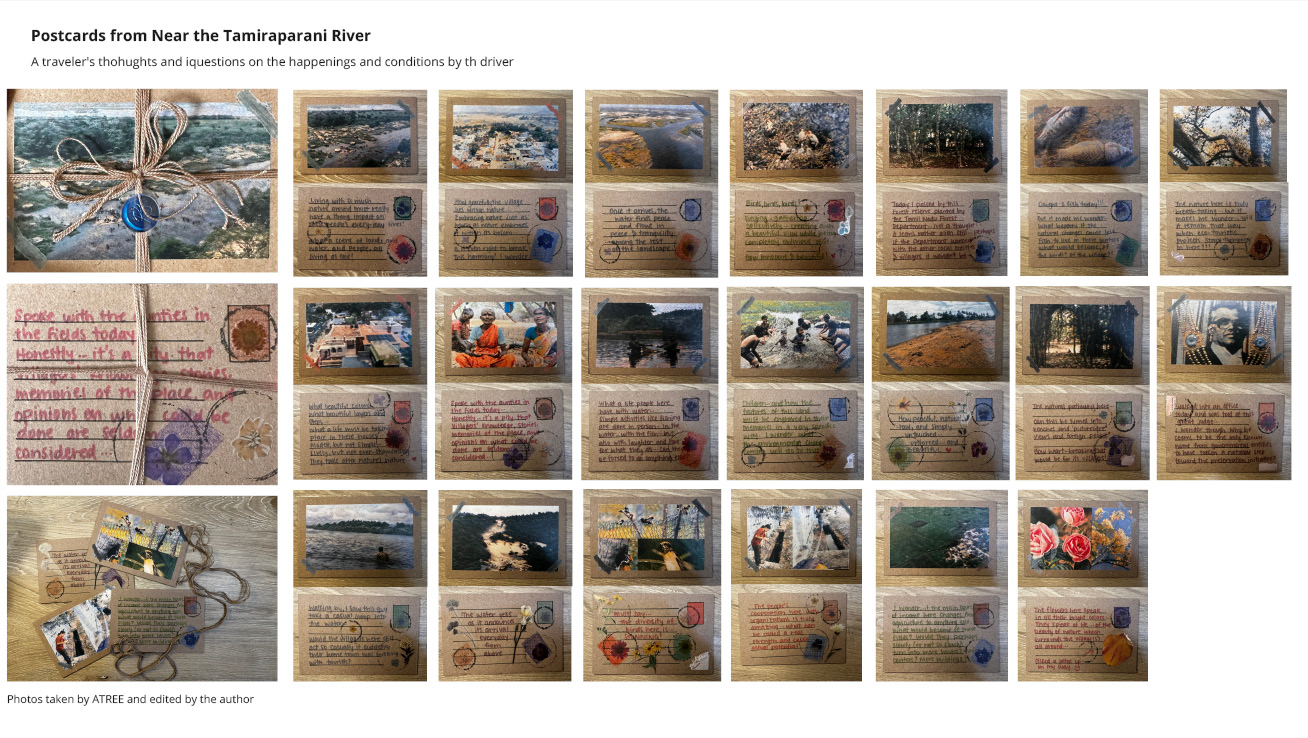
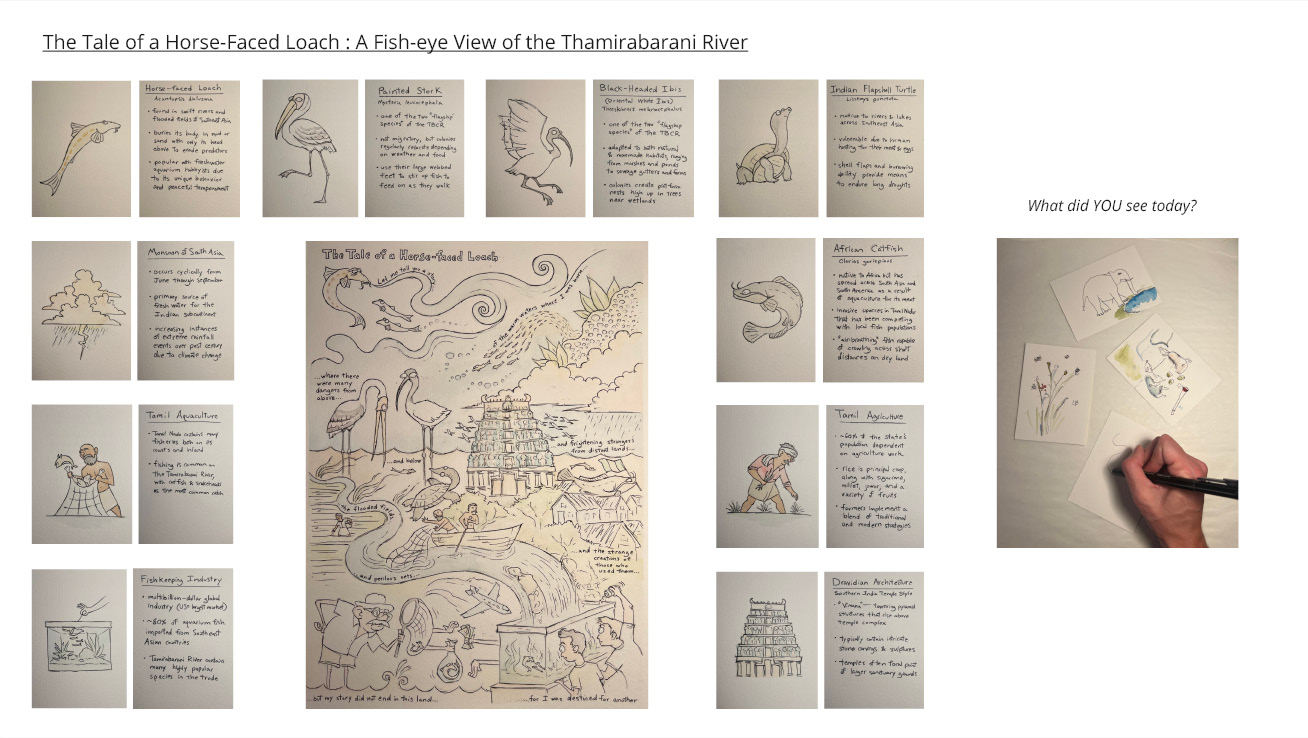


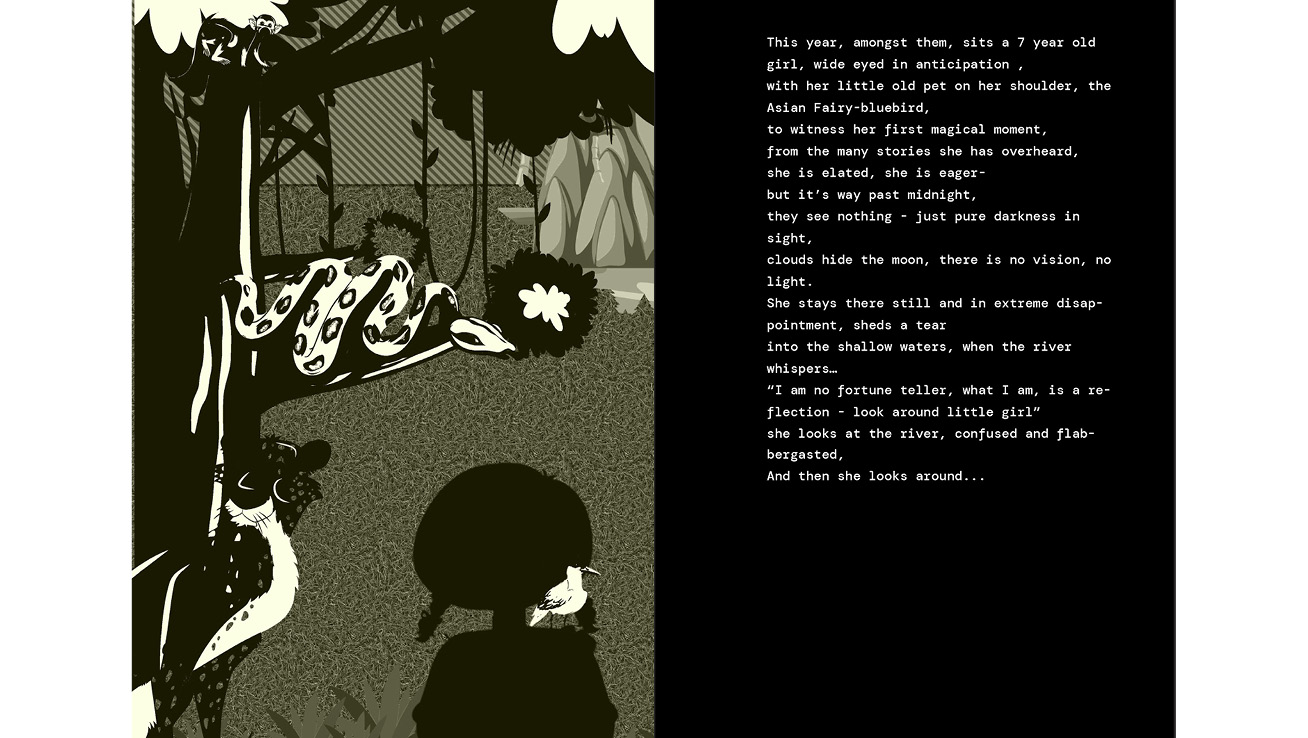
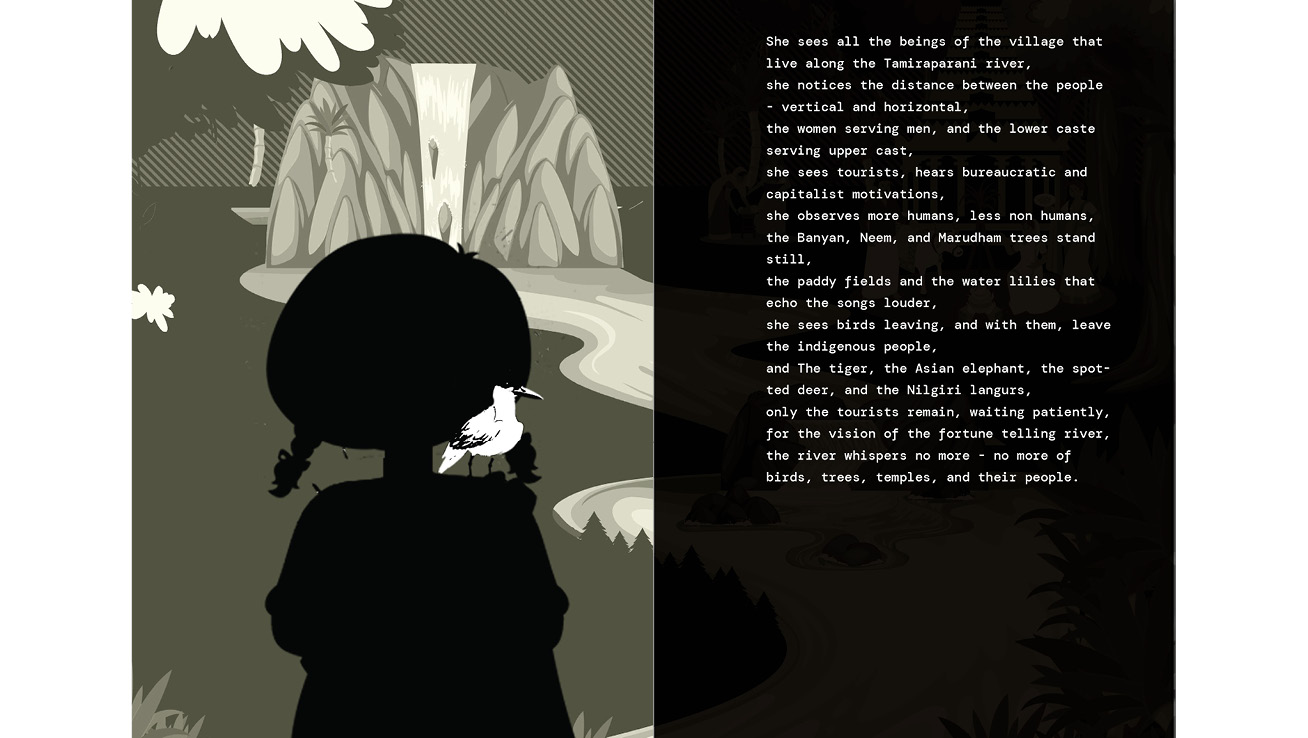
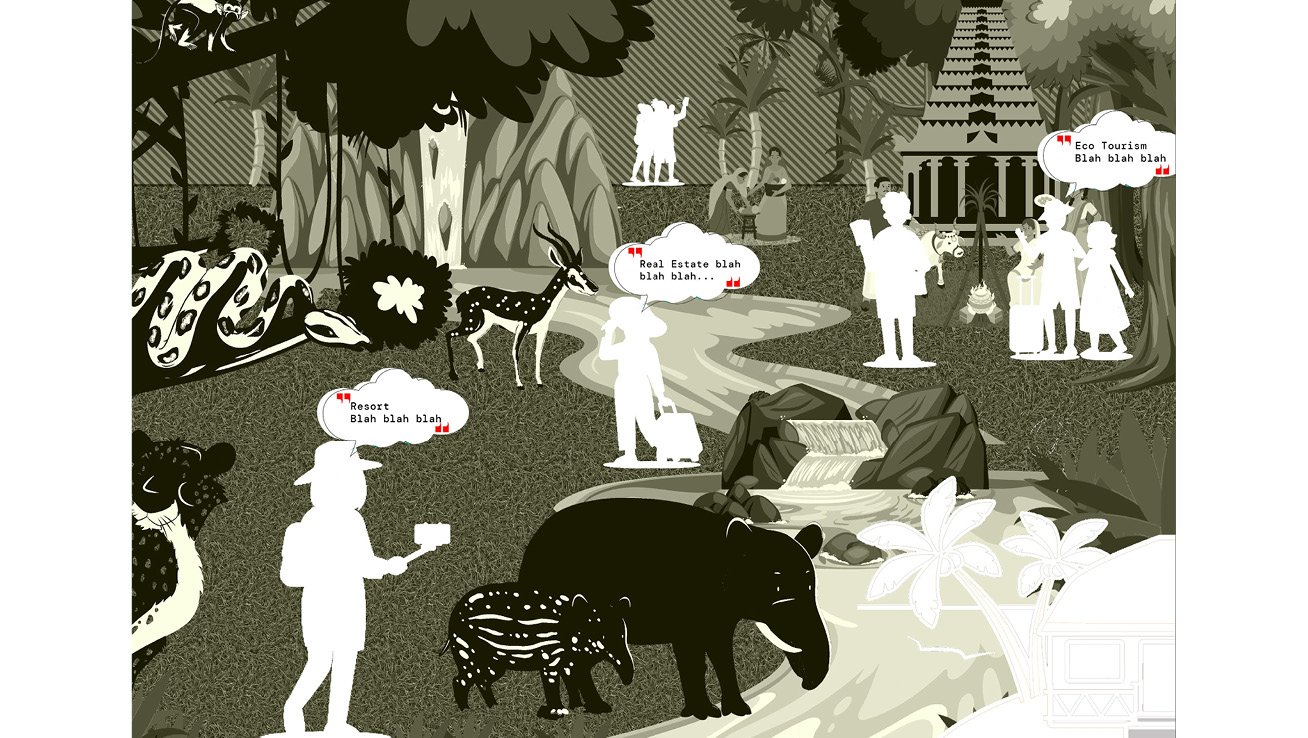
Woking toward the conservation of biodiversity, the protection of historical heritage, and the prosperity of the local communities, the Ashoka Trust for Research in Ecology and the Environment (ATREE) is currently working on a feasibility study on eco-tourism as part of a TBRC conservation and awareness strategy. Based at the Agasthyamalai Community Conservation Centre (ACCC), the team conducts community-based research and environmental education activities. The project contemplates water management practices under a changing climate, community-engaged conservation initiatives, and socio-economic activities supporting the local livelihoods.
Case Studies
The River Whispers studio has examined a range of case studies from around the world, offering diverse perspectives on interpretation. These examples spanned different forms, functions, and urban scales, from small installations to large, city-wide initiatives. This variety demonstrated the many ways interpretation can be applied -ranging from traditional museum exhibits to dynamic, site-specific installations that can be activated in response to events.
The case studies inspired a new understanding of what an “interpretation strategy” could mean. Interpretation isn’t just about presenting a fixed narrative; it can take many forms, using a variety of mediums such as architecture, landscape design, digital tools, and even performance. Interpretation is a flexible, adaptable process that can be framed and spatialized in multiple ways depending on the context.